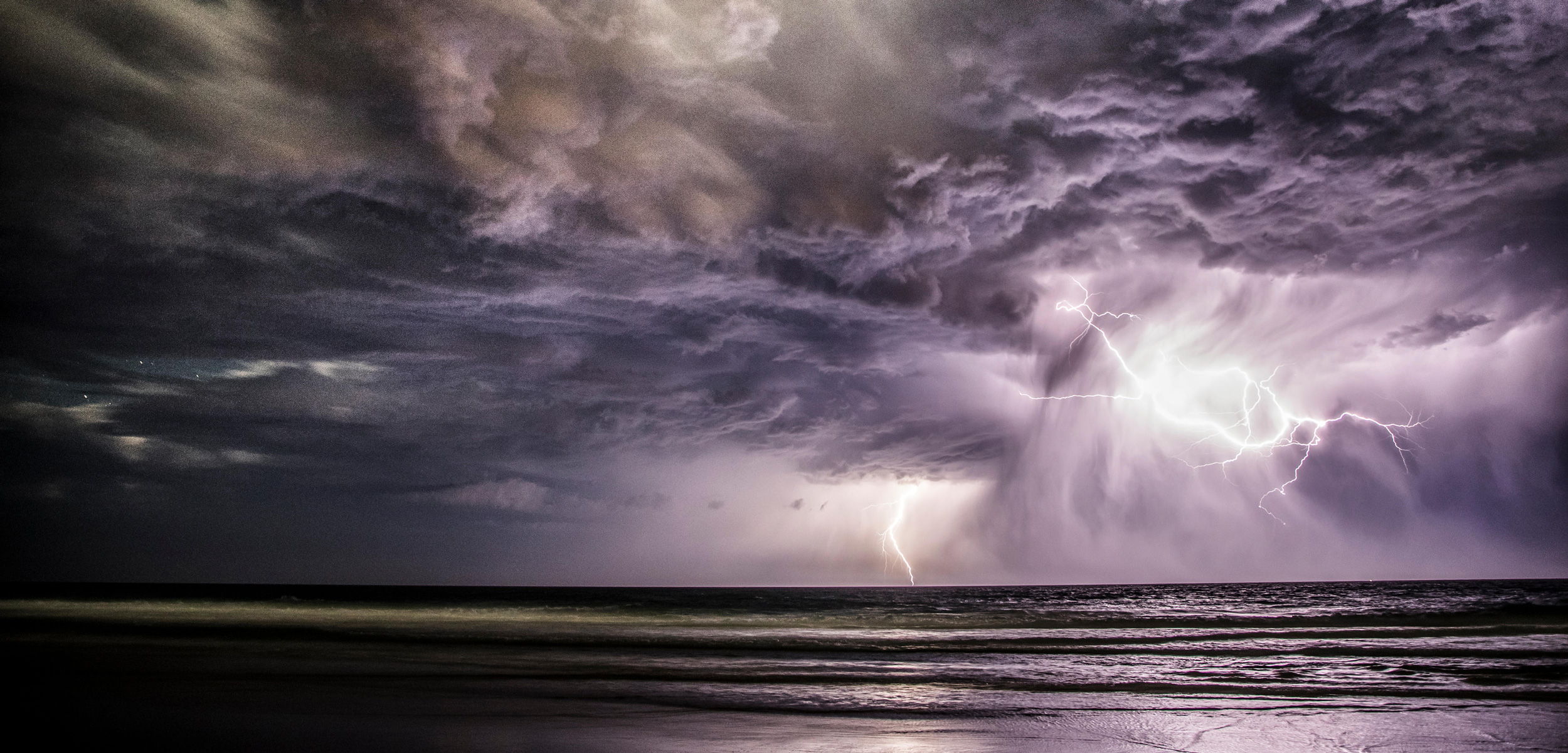Salty Seas Make Lightning Brighter
Salt seems to be the reason why bolts are brighter over the ocean than over land.
Article body copy
When marine scientist Mustafa Asfur made a tiny storm in a box, he stumbled on a possible solution to a long-standing mystery: why bolts of lightning are brighter over the ocean than they are over land.
More than 90 percent of lightning bolts strike over the continents, but the lightning that strikes the ocean can be far more intense. Rare “superbolts,” for example, with flashes 100 or 1,000 times brighter and more powerful than a regular bolt, are far more likely to hit the ocean. Exactly why this is so is still under debate.
Asfur—now at the Ruppin Academic Center in Israel—had set out to investigate how lightning bolts affect water chemistry. Instead, he discovered that, in the lab at least, lightning-like discharges are brighter over salt water than over fresh water or soil.
“We were surprised,” says atmospheric scientist Colin Price of Tel Aviv University in Israel, who was Asfur’s supervisor at the time of the experiments. “Everyone believed, including myself, that something in the thunderstorm controls the intensity of the flash; something in the cloud.” But the study shows, says Price, that what lies beneath has a big effect on brightness.
Asfur’s storm in a box was low-tech: just a spark generator, a couple of electrodes, and a beaker of water in a dark wooden cabinet. When a flash discharged, it made a tiny audible crack as the air heated up. The mini bolts were about a million times less powerful than real lightning, but created a zap with the same light profile as a real spark.
When Asfur and his colleagues first realized that saltier water seemed to be making brighter sparks, they went to the Dead Sea and brought back some water. Sure enough, that super-salty water spurred a super-bright spark. Asfur reran the experiment multiple times using fresh water, soil, and samples from the Sea of Galilee (barely salty), the Mediterranean (quite salty), and the Dead Sea (very salty). The results clearly showed that the saltier the water, the beefier the bolt. Discharges over Dead Sea water, which is about 680 times saltier than Galilee water, were nearly 40 times brighter. Flashes over Sea of Galilee water were 1.5 times brighter than over wet soil.
The team has an explanation. In water, salt splits into positive and negative ions that help conduct electricity. When lightning strikes, the more ions present, the more efficiently the electrical charge is drained from the cloud. That swift discharge causes a higher peak current and a brighter flash.
University of Washington earth sciences professor Robert Holzworth, who manages the World Wide Lightning Location Network, says the research “is a nice step towards showing that the salty oceans and seas could be responsible for more intense lighting on average.” But, he adds: “There’s a big difference between that small-scale lab study and actual lightning. There’s a whole bunch of dynamic processes that aren’t included.”
Last year, Holzworth and his colleagues surveyed two billion lightning strikes recorded between 2010 and 2018 and mapped out 8,000 intense superbolts, the vast majority of which hit the ocean. The strongest superbolts were super concentrated in the Mediterranean Sea, with the distribution curving up past Spain and the United Kingdom to Iceland and Norway. They found smaller hotspots east of Japan, off the tip of South Africa, and, surprisingly, over the Andes Mountains—the only terrestrial site.
For such a common phenomenon, lightning holds many mysteries left to untangle. Scientists are still trying to work out whether measures of bolt energy (which is what Holzworth’s superbolt survey looked at) show the same trends as measures of total bolt brightness (which is what Asfur was studying). Salt content can’t explain the entire map of superbolts, but it might, for example, contribute to the hotspot over the salty Mediterranean, says Price.
The research also hints at a way that climate change might lead to brighter lightning bolts. Some patches of seawater, such as in the North Atlantic, are getting fresher as ice melts, but others, notably in the subtropical Pacific, are getting saltier as evaporation ramps up under hotter air. Ocean acidification is also adding hydrogen ions to water. All those extra ions mean climate change might spark even more intense lightning—super superbolts.

